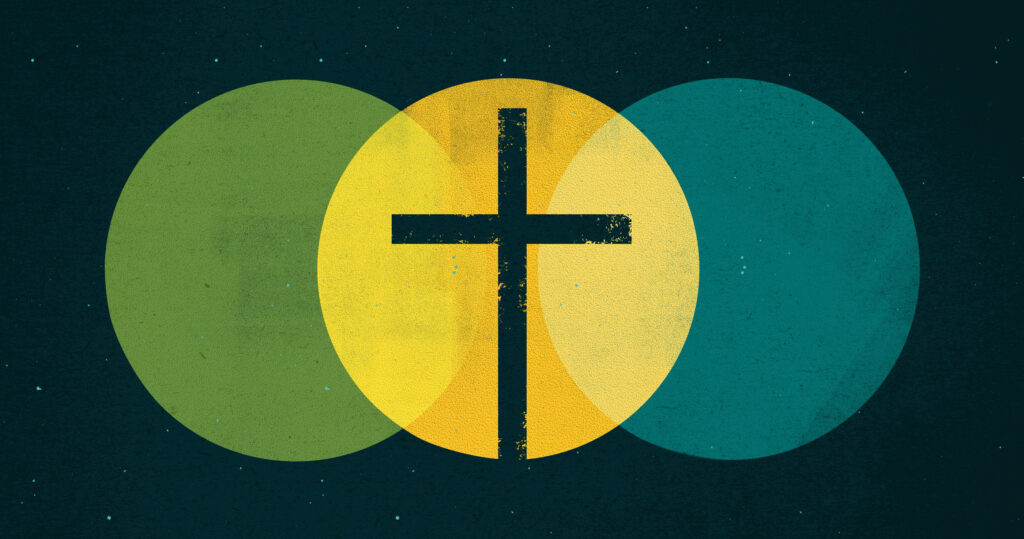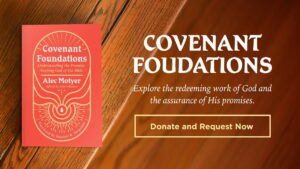Union with Christ Is on the Coronary heart of Reformation Theology

Union with Christ
When the Puritan allegorist John Bunyan (1628–1688) lastly found non secular peace, he described the awakening as a dramatic launch from bondage: “Now did my chains fall off my legs certainly; I used to be loosened from my afflictions and irons. . . . [N]ow went I additionally dwelling rejoicing, for the grace and love of God.” However much more vital than his putting imagery was the theological breakthrough that produced it:
I noticed, with the eyes of my soul, Jesus Christ at God’s proper hand; there, I say, was my righteousness. . . . I additionally noticed, furthermore, that it was not my good body of coronary heart that made my righteousness higher, nor but my dangerous body that made my righteousness worse; for my righteousness was Jesus Christ himself, “the identical yesterday, and to-day, and for ever,” Heb. xiii 8. . . . Now Christ was all; all my righteousness, all my sanctification, and all my redemption. Additional, the Lord did additionally lead me into the thriller of union with the Son of God; that I used to be joined to him, that I used to be flesh of his flesh, and bone of his bone. . . . If he and I had been one, then his righteousness was mine, his deserves mine, his victory additionally mine.1
On this passage, Bunyan’s pleasure in God flows instantly from recognizing that justification and sanctification are united however distinct salvific realities. His justification is safe as a result of it’s based mostly on a righteousness that comes from exterior himself, from Christ, and his “not responsible” verdict earlier than God thus relies upon not on whether or not he has “a superb body of coronary heart” or “a nasty body” from second to second. However quite than eliminating the necessity for inward ethical renewal, such an perception carves out area for it: he goes “dwelling rejoicing” in God and glorifying him from the safe place of freedom in Christ. That is the Reformation alignment of justification and sanctification. However discover additionally how, for Bunyan, these two features of salvation are held collectively by a standard middle level: union with Christ. All the passage celebrates how union with Christ by his Spirit is the supply of all non secular good: “Christ was all; all my righteousness, all my sanctification, and all my redemption.” For Bunyan, union with Christ was the important thing to understanding salvation in all its sides, the sum and substance of our non secular life—justification and sanctification every originating collectively from the one similar union.
A Coronary heart Aflame for God explores non secular formation practices which are in step with the 5 solas, presenting the riches of the Reformed custom for Twenty first-century evangelicals.
And Bunyan was not alone on this considering. Whether or not we study pioneering sixteenth-century Reformed theologians reminiscent of John Calvin and Peter Martyr Vermigli (1499–1562), post-Reformation thinkers reminiscent of Jerome Zanchi (1516–1590) and Theodore Beza (1519–1605), or English divines reminiscent of William Perkins (1558–1602) and William Ames, the conclusion is similar: union with Christ is the controlling concept from which flows everything of our redemption.2 Union performed a central function within the theology of the English Puritans, for whom it has been described by one historian as “the existential nerve” of their piety.3 Likewise, amongst twentieth-century and modern Reformed theologians, union with Christ continues to perform as the important thing to rightly aligning justification, sanctification, and the very concept of an authentically Christian non secular life: “Union with Christ is actually the central reality of the entire doctrine of salvation not solely in its utility but additionally in its once-for-all accomplishment within the completed work of Christ.”4
Why has this doctrine been so essential for Reformed theologians? Absolutely largely it emerged organically, for because the Reformers pursued a theology pushed by the precept of sola Scriptura, they couldn’t have helped however discover the centrality of union within the biblical texts themselves: “After getting had your eyes opened to this idea of union with Christ, you can see it nearly all over the place within the New Testomony.”5
And naturally, the Reformation extra usually was a solus Christus (Christ alone) motion, an effort to reclaim and recenter the individual and work of Christ from a medieval Catholic non secular tradition that usually allowed him to be functionally obscured. As historian Elsie McKee has famous, medieval theology typically, a minimum of in follow, “appeared to make the church with its sacraments, saints, and good works the supply of salvation, quite than God,” and the lavish consideration paid to varied saints and the Virgin Mary “appeared to make Christ one amongst many intercessors.”6 Certainly, early on in his highway to reform, Huldrych Zwingli was deeply moved by a poem titled “The Grievance of Jesus.” A satirical piece written by the Renaissance humanist Desiderius Erasmus (ca. 1466–1536), the poem imagined Jesus in heaven lamenting that he not receives many prayers since all of them go towards the corporate of saints and his mom Mary. Upon studying it, Zwingli “arrived on the opinion and the agency perception that we’d like no mediator aside from Christ.”7 Absolutely these dissatisfactions with medieval piety and a return to the New Testomony emphasis on Christ alone would have left the Reformers primed and prepared for a renewed emphasis on the doctrine of union with Christ.
Justification and sanctification exist as distinct however inseparable realities, each flowing from union with Christ.
However maybe above all, union takes a central place in Reformed theology due to the way in which it successfully solves the puzzle of exactly how justification and sanctification relate to one another. Each blessings are essentially current within the life of each believer as a result of each blessings stream from the identical supply: Christ himself and our Spirit-wrought union with him. In a basic passage from his Institutes, John Calvin explains this because the believer’s “double grace” (duplex gratia):
Christ was given to us by God’s generosity, to be grasped and possessed by us in religion. By partaking of him, we principally obtain a double grace: particularly, that being reconciled to God by way of Christ’s blamelessness, we could have in heaven as a substitute of a Decide a gracious Father; and secondly, that sanctified by Christ’s spirit we could domesticate blamelessness and purity of life.8
This description emphasizes the simultaneous and inseparable nature of justification and sanctification, each of which you obtain if you obtain Christ. Certainly, what it means to be joined to Christ is to have each:
As Christ can’t be torn into elements, so these two which we understand in him collectively and conjointly are inseparable—particularly, righteousness [i.e., justification] and sanctification. Whomever, subsequently, God receives into grace, on them he on the similar time bestows the spirit of adoption [Rom. 8:15], by whose energy he remakes them to his personal picture.9
Discover that the explanation why justification and sanctification cohere is as a result of Christ himself coheres, and to counsel {that a} justified individual may not even be sanctified (the Catholic cost in opposition to Protestants) is to counsel that Christ could possibly be “torn into elements.”
After we take into consideration non secular formation in Reformation perspective, it’s important to know that any actual development we obtain flows out of this Spirit-wrought union. That is what distinguishes a biblical preserving the center from a moralistic self-striving. Anybody can have interaction in non secular disciplines—certainly, one finds devoted practitioners of rigorous non secular methods throughout all main religions—however actual coronary heart change is the work of God’s Spirit alone. Sure, the Spirit makes use of means, however by following the Reformers in recognizing that justification and sanctification exist as distinct however inseparable realities, each flowing from union with Christ, we are able to relaxation within the information that our justification is safe and completed whereas vigorously pursuing Spirit-empowered sanctification. Figuring out that our justification is remaining, completed, and excellent, we are able to joyfully give ourselves to the work of non secular formation.10
Notes:
- John Bunyan, Grace Abounding to the Chief of Sinners (Glasgow: Porteous and Hislop, 1863), 90–92.
- Richard A. Muller, Calvin and the Reformed Custom: On the Work of Christ and the Order of Salvation (Grand Rapids, MI: Baker Educational, 2012), 202–43.
- R. Tudur Jones, “Union with Christ: The Existential Nerve of Puritan Piety,” Tyndale Bulletin 41, no. 2 (1990): 186–208, https://doi.org/10.53751/001c.30522
- John Murray, Redemption Completed and Utilized (Grand Rapids, MI: Eerdmans, 1955), 161. See additionally Michael S. Horton, Covenant and Salvation: Union with Christ (Louisville: Westminster John Knox, 2007); Richard Gaffin, “The Work of Christ Utilized,” in Christian Dogmatics: Reformed Theology for the Church Catholic, ed. Michael Allen and Scott R. Swain (Grand Rapids, MI: Baker Educational, 2016).
- Anthony A. Hoekema, Saved by Grace (Grand Rapids, MI: Eerdmans, 1989), 64.
- Elsie Anne McKee, “Reformed Worship within the Sixteenth Century,” in Christian Worship in Reformed Church buildings Previous and Present, ed. Lukas Vischer (Grand Rapids, MI: Eerdmans, 2003), 7.
- Ulrich Zwingli, Chosen Works, ed. Samuel Macauley Jackson (Philadelphia: College of Pennsylvania Press, 1972), 2:217. For the historic background, see Carlos M. N. Ireland, Reformations: The Early Trendy World, 1450–1650 (New Haven, CT: Yale College Press, 2016), 224.
- John Calvin, Institutes of the Christian Faith, ed. John T. McNeill, trans. Ford Lewis Battles, Library of Christian Classics (Philadelphia: Westminster, 1960), 1:725 (3.11.1).
- Calvin, Institutes, 1:732 (3.11.6).
- Though there have been many fantastic expositions of how justification and sanctification relate to one another, if I needed to advocate only one, it will most likely be John Murray’s remedy in Redemption Completed and Utilized, 117–50.
This text is tailored from A Coronary heart Aflame for God: A Reformed Strategy to Religious Formation by Matthew C. Bingham.
Associated Articles








